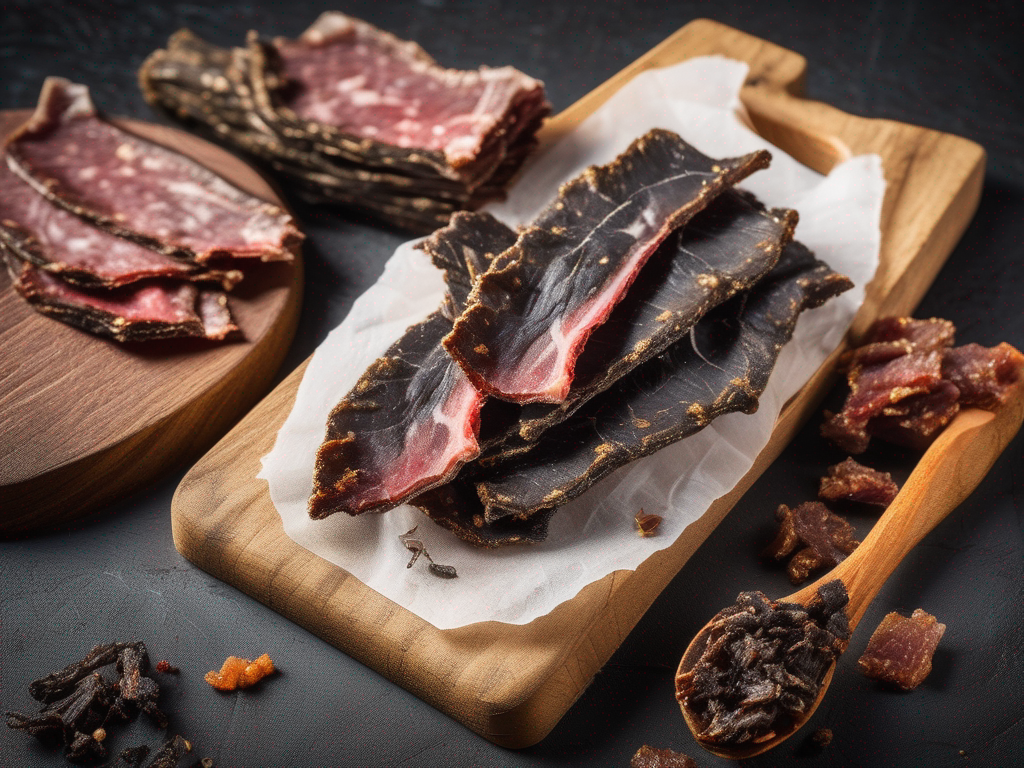
How to Prevent Mold Growth on Biltong Dried Cured Meat During Storage
Get Your Free Food Safety Cheat Sheet
30 most common foods with instant answers. Print it and stick it on your fridge—completely free!
How to Prevent Mold Growth on Biltong Dried Cured Meat During Storage
Biltong dried cured meat is a popular South African snack known for its rich flavor and long shelf life. However, improper storage can lead to mold growth, affecting the taste, texture, and safety of the biltong. In this blog post, we will discuss effective ways to prevent mold growth on biltong dried cured meat during storage, ensuring its quality and safety. (Biltong dried cured meat)
Understanding Mold Growth on Biltong
Before we delve into prevention methods, it's essential to understand why mold can develop on biltong dried cured meat. Mold thrives in warm, humid environments with poor air circulation. Biltong, being a dried meat product, has a low moisture content, but if exposed to moisture during storage, mold spores can germinate and spread rapidly. Mold not only affects the taste and appearance of biltong but can also pose health risks if consumed.
Signs of Mold Growth on Biltong
- Fuzzy green, white, or black spots on the surface of the biltong
- Musty or off-putting odor
- Slimy or discolored patches
- Changes in texture, such as soft spots or sticky residue
Tips to Prevent Mold Growth on Biltong
To safeguard your biltong dried cured meat from mold growth, follow these practical tips and best practices for storage:
1. Proper Air Circulation
- Store biltong in a well-ventilated area to prevent moisture buildup.
- Avoid sealing biltong in airtight containers, as this can trap humidity and promote mold growth.
- Use breathable storage bags or containers that allow air to circulate around the biltong.
2. Optimal Temperature and Humidity Levels
- Store biltong in a cool, dry environment with a temperature range of 50-70°F (10-21°C).
- Maintain humidity levels below 60% to inhibit mold growth.
- Avoid storing biltong in areas prone to temperature fluctuations, such as near stoves or windows.
3. Proper Packaging
- Wrap biltong in parchment paper or butcher paper before storing it in a breathable container.
- Avoid using plastic bags or cling film, as these can trap moisture and promote mold growth.
- Check the packaging regularly for any signs of condensation or moisture buildup.
4. Regular Inspection and Rotation
- Check your biltong periodically for any signs of mold growth or spoilage.
- Rotate the biltong pieces in the storage container to ensure even air circulation.
- Discard any biltong that shows signs of mold, as consuming mold-contaminated food can be harmful.
5. Quality Ingredients and Hygiene
- Use high-quality meat cuts for making biltong, ensuring proper trimming of fat and connective tissue.
- Maintain good hygiene practices during the biltong-making process to prevent contamination.
- Wash hands, utensils, and surfaces thoroughly before handling the meat.
Conclusion
By following these preventive measures, you can prolong the shelf life of your biltong dried cured meat and enjoy it without the risk of mold contamination. Remember that proper storage conditions, good ventilation, and regular inspection are key to preserving the quality and safety of your biltong. With these tips in mind, you can savor this delicious snack without worrying about mold growth. [Click here](/food/biltong dried cured meat) to learn more about biltong dried cured meat and its culinary traditions. (Biltong dried cured meat)
Related Posts
Here are some other articles you might find helpful:
Authoritative Food Safety References
These agencies and university labs inform every tip and health precaution we publish.
USDA FoodKeeper – Cold Storage Guidelines
Official refrigerator, freezer, and pantry timelines maintained by the U.S. Department of Agriculture.
Visit USDA FoodKeeperFDA Produce Safety Rule & Grower Guidance
Field-to-fridge handling practices that prevent contamination of fruits, vegetables, and leafy greens.
Visit FDA Produce SafetyCDC Foodborne Illness Prevention Hub
Surveillance-backed guidance on pathogens, symptoms, and steps to reduce foodborne illness risk.
Visit CDC Food SafetyUC Davis Postharvest Technology Center
University research detailing optimal storage atmospheres for produce after harvest.
Visit UC Davis PostharvestPenn State Extension – Home Food Preservation & Safety
Peer-reviewed extension bulletins on safe canning, chilling, and reheating practices.
Visit Penn State ExtensionGet Your Free Food Safety Cheat Sheet
30 most common foods with instant answers. Print it and stick it on your fridge—completely free! Want more? Upgrade to the complete guide with 70+ foods.
Scan your food directly and get instant safety info using our AI-powered camera feature.